Posté par Pascale Dubus, le 13 juillet 2015;
- Date limite : 15 septembre 2015
- Date et lieu du colloque : 17-18 décembre 2015, Royaume Uni, University of Cambridge.
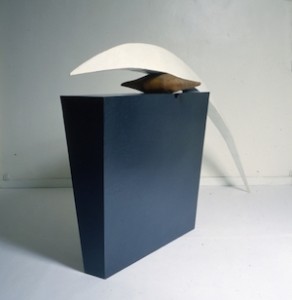 This interdisciplinary conference aims to bring together scholars from the sciences, social sciences and humanities in order to address material practices of mimesis. Aristotle, in one of the first definitions of the concept, argues that mimesis, or the imitation of nature, refers to both form and material. Thus far, scholarship has mostly focused on the role of form in mimetic practices, while the mimetic role of materials, despite the many disciplines in which these are central to making and knowing, remains significantly understudied. This interdisciplinary conference aims to bring together scholars from the sciences, social sciences and humanities in order to address material practices of mimesis. Aristotle, in one of the first definitions of the concept, argues that mimesis, or the imitation of nature, refers to both form and material. Thus far, scholarship has mostly focused on the role of form in mimetic practices, while the mimetic role of materials, despite the many disciplines in which these are central to making and knowing, remains significantly understudied.
Materials play a fundamental role in mimetic practices, from the earliest known examples to some of the most recent. Ancient ceramic vessels, for instance, some nearly . . . → En lire plus
Posté par Denis Dubois, le 13 juillet 2015;
- Date limite : 15 juillet 2015
- Date et lieu du colloque : 23-25 juin 2015, Bâle, Université de Bâle.
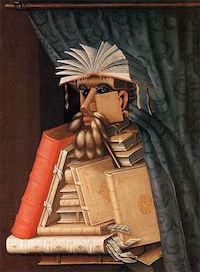 « Pensée métaphorique et procédés de métaphorisation dans l’image artistique – Le rapport entre opérations cognitives et opérations visuelles », session du Troisième congrès suisse en histoire de l’art / Schweizerischen Kongress für Kunstgeschicht, Université de Bâle, 23-25 juin 2015. « Pensée métaphorique et procédés de métaphorisation dans l’image artistique – Le rapport entre opérations cognitives et opérations visuelles », session du Troisième congrès suisse en histoire de l’art / Schweizerischen Kongress für Kunstgeschicht, Université de Bâle, 23-25 juin 2015.
Les métaphores marquent les œuvres d’art visuelles à différents niveaux. Ainsi, G. Boehm, pour expliquer la ‘différence iconique’, a eu recours à la structure contrastive de la métaphore, tandis que pour A. Danto l’opération métaphorique était à la base de toute œuvre d’art. Il existe différentes possibilités d’établir un rapport entre les images de type artistique et le terme de la métaphore, à partir du concept même de l’œuvre . . . → En lire plus
Posté par Sylvain Demarthe, le 12 juillet 2015;
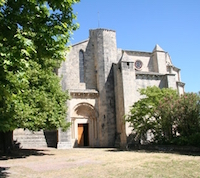 Les études sur le monachisme féminin en France au Moyen Âge apparaissent actuellement éparses, parfois datées et même en marge par rapport aux études sur le milieu monacal masculin. De plus, une approche historique semble privilégiée à l’histoire de l’art et à l’archéologie. Actuellement, les travaux du Centre Européen de Recherche sur les Congrégations et les Ordres Religieux (CERCOR), rattaché à l’Université Jean-Monnet de Saint-Étienne, comptent parmi les références majeures et les plus actualisées sur le sujet. Si les actes du deuxième colloque international du CERCOR, Les religieuses dans le cloître et dans le monde, datant de 1994, rassemblent diverses contributions axées principalement sur l’histoire, la récente journée . . . → En lire plus Les études sur le monachisme féminin en France au Moyen Âge apparaissent actuellement éparses, parfois datées et même en marge par rapport aux études sur le milieu monacal masculin. De plus, une approche historique semble privilégiée à l’histoire de l’art et à l’archéologie. Actuellement, les travaux du Centre Européen de Recherche sur les Congrégations et les Ordres Religieux (CERCOR), rattaché à l’Université Jean-Monnet de Saint-Étienne, comptent parmi les références majeures et les plus actualisées sur le sujet. Si les actes du deuxième colloque international du CERCOR, Les religieuses dans le cloître et dans le monde, datant de 1994, rassemblent diverses contributions axées principalement sur l’histoire, la récente journée . . . → En lire plus
Posté par Sebastien Chauffour, le 12 juillet 2015;
- Date et lieu du colloque : 17-18 septembre 2015, Paris
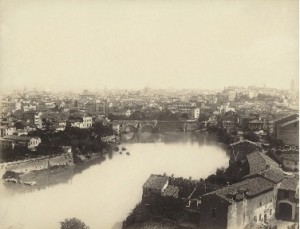 À la rencontre de l’histoire architecturale et urbaine et de l’histoire de la photographie, le colloque Les capitales photographiques s’intéresse à la façon dont l’image des villes se construit, ou plus souvent se reconstruit, dans le média photographique, des débuts de la photographie à la Première Guerre mondiale. La nouvelle technique, qui dévalue au XIXe siècle la production dessinée des figures et qui permet la multiplication du nombre des vues et leur reproduction illimitée, n’est pas porteuse de la même valeur heuristique. Mais, à mesure de ses rapides progrès, elle est un vecteur de précision accrue, suscitant l’illusion du réel et favorisant la notation incidente ou fortuite de . . . → En lire plus À la rencontre de l’histoire architecturale et urbaine et de l’histoire de la photographie, le colloque Les capitales photographiques s’intéresse à la façon dont l’image des villes se construit, ou plus souvent se reconstruit, dans le média photographique, des débuts de la photographie à la Première Guerre mondiale. La nouvelle technique, qui dévalue au XIXe siècle la production dessinée des figures et qui permet la multiplication du nombre des vues et leur reproduction illimitée, n’est pas porteuse de la même valeur heuristique. Mais, à mesure de ses rapides progrès, elle est un vecteur de précision accrue, suscitant l’illusion du réel et favorisant la notation incidente ou fortuite de . . . → En lire plus
Posté par Pascale Dubus, le 12 juillet 2015;
- Date limite : 15 août 2015
- Date et lieu du colloque : 29-30 avril 2016, Berne
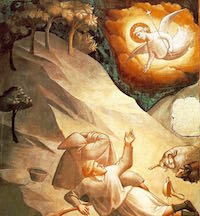 Chiaroscuro since Leon Battista Alberti’s De pictura (1435) has been one of the central subjects characterising painting and sculpture in practice and theory in Italy. Primarily, it concerns the articulation of plastic qualities, the formulation of relief, both in painting and sculpture. In the northern tradition, too, chiaroscuro has been highly valued. Through chiaroscuro, the textures of materials and the structural fabric of their surfaces, including their eye-catching highlights, have been evoked. Chiaroscuro goes hand in hand with an intensification of optical qualities. Chiaroscuro since Leon Battista Alberti’s De pictura (1435) has been one of the central subjects characterising painting and sculpture in practice and theory in Italy. Primarily, it concerns the articulation of plastic qualities, the formulation of relief, both in painting and sculpture. In the northern tradition, too, chiaroscuro has been highly valued. Through chiaroscuro, the textures of materials and the structural fabric of their surfaces, including their eye-catching highlights, have been evoked. Chiaroscuro goes hand in hand with an intensification of optical qualities.
In the Cinquecento, the significance of chiaroscuro underwent an important change. The evocation of plasticity and corporeality through a chiaroscuro . . . → En lire plus
Posté par Pascale Dubus, le 10 juillet 2015;
- Date limite : 15 juillet 2015
- Date et lieu du colloque : 13-14 novembre 2015, New Jersey, Princeton University.
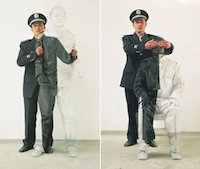 We invite proposals from colleagues, independent scholars, and advanced graduate students for the asia•theory•visuality conference at Princeton University. The conferenceis conceived as a venue that brings together scholars interested in interdisciplinary approaches to East and Southeast Asian cinema and media studies. Each iteration of the conference will be organized around keywords that foster new forms of exchange across diverse disciplines, practices, and historical moments. We invite proposals from colleagues, independent scholars, and advanced graduate students for the asia•theory•visuality conference at Princeton University. The conferenceis conceived as a venue that brings together scholars interested in interdisciplinary approaches to East and Southeast Asian cinema and media studies. Each iteration of the conference will be organized around keywords that foster new forms of exchange across diverse disciplines, practices, and historical moments.
This year’s two-day conference on “The Invisible” calls for a set of exploratory methodologies and critical vocabularies to articulate the limits of visibility. We invite participants to envision new ways of engaging with multiple registers of the invisible (i.e. epistemological, historical, . . . → En lire plus
Posté par Denis Dubois, le 10 juillet 2015;
- Date limite : 1er août 2015
- Date de parution : 7 novembre 2015
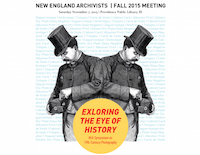 The New England Archivists (NEA) is working in collaboration with the Journal of Contemporary Archival Studies (JCAS) to publish original articles on the topic of 19th-century photography collections and techniques. The New England Archivists (NEA) is working in collaboration with the Journal of Contemporary Archival Studies (JCAS) to publish original articles on the topic of 19th-century photography collections and techniques.
The JCAS will select submissions for a special issue to be published online in conjunction with the NEA Fall 2015 Meeting focusing on 19th-century photography to be held in Providence, Rhode Island, on November 7, 2015.
Authors should submit original works of recent research on: – the history of 19th-century photography collections – management and descriptive projects involving these materials – the use of 19th-century photo collections by researchers, artists, and staff in interesting projects and performances.
Original works by students, archivists, . . . → En lire plus
Posté par Denis Dubois, le 9 juillet 2015;
- Date limite : 15 août 2015
- Date et lieu de la journée d'études : 7 novembre 2015, New York, Hunter College
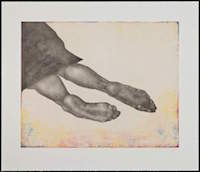 The Association of Print Scholars (APS) is pleased to announce a symposium to support new critical ideas and research about printmaking. The event will occur during Print Week in New York, which includes major events such as the IFPDA Print Fair, the E/AB Fair and more. This conference seeks to investigate the relationship between specific technical choices made by printmakers, printers, or publishers in order to rethink more broadly the relationship between process, material and meaning in the graphic arts. We seek papers that focus on a wide range of chronological periods and geographic locations in order to highlight overarching methodological issues. The Association of Print Scholars (APS) is pleased to announce a symposium to support new critical ideas and research about printmaking. The event will occur during Print Week in New York, which includes major events such as the IFPDA Print Fair, the E/AB Fair and more. This conference seeks to investigate the relationship between specific technical choices made by printmakers, printers, or publishers in order to rethink more broadly the relationship between process, material and meaning in the graphic arts. We seek papers that focus on a wide range of chronological periods and geographic locations in order to highlight overarching methodological issues.
Posté par Denis Dubois, le 9 juillet 2015;
- Date limite : 1er septembre 2015
- Date et lieu du colloque : 27-28 février 2016, Cambridge, Anglia Ruskin University
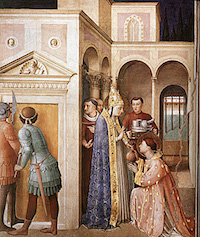 Historical fictions can be understood as an expanded mode of historiography. Scholars in literary, visual, historical and museum/re-creation studies have long been interested in the construction of the fictive past, understanding it as a locus for ideological expression. We welcome paper proposals from Archeology, Literature, Media, Art History, Musicology, Reception Studies, Museum Studies, Recreation and others. Historical fictions can be understood as an expanded mode of historiography. Scholars in literary, visual, historical and museum/re-creation studies have long been interested in the construction of the fictive past, understanding it as a locus for ideological expression. We welcome paper proposals from Archeology, Literature, Media, Art History, Musicology, Reception Studies, Museum Studies, Recreation and others.
We welcome paper proposals across historical periods, with ambitious, high-quality, inter-disciplinary approaches and new methodologies that will support research into larger trends and which will lead to more theoretically informed understandings of the mode across historical periods, cultures and languages.
We aim to create a disciplinary core, . . . → En lire plus
Posté par Denis Dubois, le 8 juillet 2015;
- Date limite : 1er septembre 2015
- Date de remise des textes : 15 septembre 2015
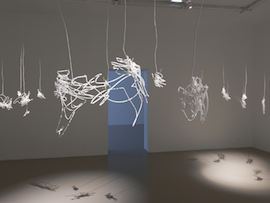 Le thème du prochain numéro de la revue italienne en ligne dédiée à l’art contemporain, Senzacorniche, sera consacré à la « parole ». Originellement, le terme « parole », dérivé du latin tardif parabŏla, renvoyait à « l’enseignement » et au « discours », signifiant ensuite par extension une voix articulée exprimant un concept. En relation à la sphère de la signification, la parole a été dotée d’un sens général, partagé dans la conscience linguistique des locuteurs, qui est spécifié et déterminé par le contexte de la phrase . . . → En lire plus Le thème du prochain numéro de la revue italienne en ligne dédiée à l’art contemporain, Senzacorniche, sera consacré à la « parole ». Originellement, le terme « parole », dérivé du latin tardif parabŏla, renvoyait à « l’enseignement » et au « discours », signifiant ensuite par extension une voix articulée exprimant un concept. En relation à la sphère de la signification, la parole a été dotée d’un sens général, partagé dans la conscience linguistique des locuteurs, qui est spécifié et déterminé par le contexte de la phrase . . . → En lire plus
Posté par PURH, le 8 juillet 2015;
- Date limite : 30 octobre 2015
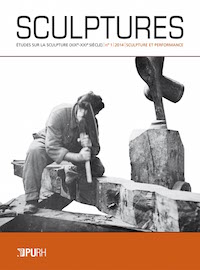 Revue Sculptures Revue Sculptures
L’étude de la sculpture du XIXe siècle à nos jours a désormais sa revue scientifique. Portée par les Presses universitaires de Rouen et du Havre (PURH), elle est annuelle. Centrée sur l’étude d’une temporalité associée à la naissance de la modernité, la revue Sculptures propose d’ouvrir le débat sur des thématiques larges. La revue croise les regards autour d’enjeux historiques, esthétiques, épistémologiques, sociologiques, philosophiques, techniques et iconographiques.
La revue est dotée d’un comité scientifique et de lecture constitué de personnalités du monde l’art, d’universitaires et de conservateurs : Sylvain Amic, Claire Barbillon, Catherine Chevillot, Nicolas Coutant, Stéphanie Deschamps-Tan, Thierry Dufrêne, Ophélie Ferlier, Bruno Gaudichon, Fabrice Hergott, Dominique Jarrasse, Antoinette Le . . . → En lire plus
Posté par Laëtitia Pierre, le 7 juillet 2015;
- Date et lieu : Samedi 10 octobre 2015 - Versailles, Bibliothèque municipale – Galerie des Affaires étrangères
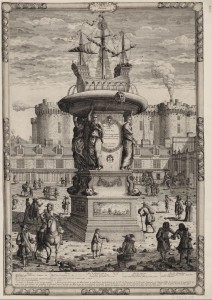 Les années 1980 furent propices à l’étude du travail des ingénieurs : en 1981, Anne Blanchard publiait un Dictionnaire des ingénieurs militaires actifs en France entre 1691 et 1791, témoignant par son volume de l’importance de leur activité, tandis qu’en 1988, Antoine Picon, dans son ouvrage Architectes et ingénieurs au siècle des Lumières, accordait enfin aux ingénieurs des Ponts l’attention qu’ils méritaient et examinait leur formation et leurs méthodes de travail au regard de celles des architectes de l’Académie royale d’architecture. Les années 1980 furent propices à l’étude du travail des ingénieurs : en 1981, Anne Blanchard publiait un Dictionnaire des ingénieurs militaires actifs en France entre 1691 et 1791, témoignant par son volume de l’importance de leur activité, tandis qu’en 1988, Antoine Picon, dans son ouvrage Architectes et ingénieurs au siècle des Lumières, accordait enfin aux ingénieurs des Ponts l’attention qu’ils méritaient et examinait leur formation et leurs méthodes de travail au regard de celles des architectes de l’Académie royale d’architecture.
Au-delà des programmes attendus, fortifications, ouvrages hydrauliques, ponts et routes, les ingénieurs, militaires et des Ponts et Chaussées, honorèrent des commandes . . . → En lire plus
Posté par Pascale Dubus, le 7 juillet 2015;
- Date limite : 9 novembre 2015
- Date et lieu du colloque : 7 - 9 April 2016, Royaume-Uni, University of Edinburgh
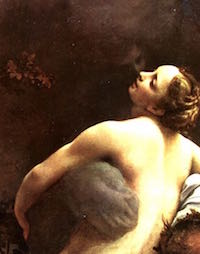 The air is unique among the elements in having this affinity with nothingness, in signifying the being of non-being, the matter of the immaterial’ (Steven Connor, The Matter of Air, 31). The air is unique among the elements in having this affinity with nothingness, in signifying the being of non-being, the matter of the immaterial’ (Steven Connor, The Matter of Air, 31).
The materiality of the air has long been at the forefront of our cultural and visual imaginary. Air has variously been associated with life and death, purity and pollution, circulation and stagnation. It is a thing that moves and flows across space and time. It is also a site of transmission, a force that conveys both the tangible and intangible. From vapours, microbes, and particulates to signals, sounds, and images, the air is . . . → En lire plus
Posté par Denis Dubois, le 7 juillet 2015;
- Date et lieu de la journée d'études : lundi 14 septembre 2015, Paris, EHESS
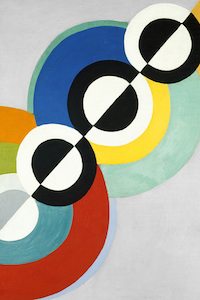 Le Centre de recherches sur les arts et le langage (CRAL, EHESS-CNRS) a entrepris de développer des axes transversaux afin de favoriser les interactions entre ses trois principaux champs disciplinaires : littérature, images, musique. Or la question du rythme se pose dans chacun de ces champs. En décembre 2014, une première rencontre généraliste, sous le titre Histoire du rythme, histoire des rythmes, a réuni des historiens, des philosophes et des musicologues afin d’étudier les différentes perceptions du rythme et ses usages à travers les siècles, tant dans le domaine de l’histoire sociale que dans celui de la philosophie . . . → En lire plus Le Centre de recherches sur les arts et le langage (CRAL, EHESS-CNRS) a entrepris de développer des axes transversaux afin de favoriser les interactions entre ses trois principaux champs disciplinaires : littérature, images, musique. Or la question du rythme se pose dans chacun de ces champs. En décembre 2014, une première rencontre généraliste, sous le titre Histoire du rythme, histoire des rythmes, a réuni des historiens, des philosophes et des musicologues afin d’étudier les différentes perceptions du rythme et ses usages à travers les siècles, tant dans le domaine de l’histoire sociale que dans celui de la philosophie . . . → En lire plus
Posté par Sébastien Bontemps, le 6 juillet 2015;
- Date limite : 4 septembre 2015
- Date et lieu de la journée d'étude : 5 mars 2016, The Courtauld Institute of Art, Londres
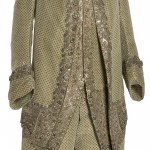 Fabrications: Designing for Silk in the 18th Century (London, 5 Mar 16) The Courtauld Institute of Art, March 05, 2016 Deadline: Sep 4, 2015 Joubert de la Hiberderie’s Le Dessinateur d’étoffes d’or, d’argent, et de soie (1765) was the first book to be published on textile design in Europe. In preparation for the publication of an English translation and critical edition of the text this one day conference calls for papers that will analyse, critique, contextualise, review or otherwise engage with the Le dessinateur in the light of its themes: production, design, technology, education, botany and art. Joubert’s manual argues for both a liberal and a technological education for the ideal designer. Such a person must, he argues, have detailed . . . → En lire plus Fabrications: Designing for Silk in the 18th Century (London, 5 Mar 16) The Courtauld Institute of Art, March 05, 2016 Deadline: Sep 4, 2015 Joubert de la Hiberderie’s Le Dessinateur d’étoffes d’or, d’argent, et de soie (1765) was the first book to be published on textile design in Europe. In preparation for the publication of an English translation and critical edition of the text this one day conference calls for papers that will analyse, critique, contextualise, review or otherwise engage with the Le dessinateur in the light of its themes: production, design, technology, education, botany and art. Joubert’s manual argues for both a liberal and a technological education for the ideal designer. Such a person must, he argues, have detailed . . . → En lire plus
Posté par Sébastien Bontemps, le 6 juillet 2015;
- Date limite : 15 septembre 2015
- Date et lieu du colloque : 12-15 mai 2015, University of Western Michigan, Kalamazoo, USA
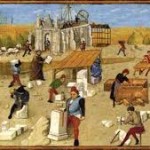 Session at 51. Int. Congress on Medieval Studies (Kalamazoo, 12-15 May 16) University of Western Michigan, Kalamazoo, MI (USA), May 12 – 15, 2016 Session at 51. Int. Congress on Medieval Studies (Kalamazoo, 12-15 May 16) University of Western Michigan, Kalamazoo, MI (USA), May 12 – 15, 2016
Deadline: Sep 15, 2015
New Perspectives on Medieval Rome (2 Sessions) Organizers: Marius B. Hauknes, Andrew W. Mellon Postdoctoral Fellow, Johns Hopkins University Alison Locke Perchuk, Assistant Professor of Art History, California State University Channel Islands Digital, environmental, material, Mediterranean, sensory, spatial: these are among the recent “turns” taken by the medieval humanities, including art history.
The new perspectives on the past opened by these approaches, many of which are informed by interdisciplinary research and contemporary cultural interests in the natural and built world, are fundamentally reshaping how we conceive of and study medieval art and . . . → En lire plus
Posté par Denis Dubois, le 6 juillet 2015;
- Date et lieu de la journée d'études : 20 mai 2016, Paris
- Date limite : 1er octobre 2015
 Réfléchissant sur les résurgences des discours de décadence à la fin du XXe siècle, Pierre Jourde écrit : « C’est une idée reçue de vouloir à tout prix des fins de siècle décadentes, comme par une sorte de superstition numérique. Il reste que la seule existence de cette superstition lui confère une espèce de réalité, de poids dans l’imaginaire[1] ». Nous proposons de confronter deux fins de siècle du point de vue des discours qu’elles ont porté sur l’art. La fin du XIXe siècle et la fin du XXe siècle sont deux moments de crise caractérisés par de profondes mutations culturelles et esthétiques − voire de véritables . . . → En lire plus Réfléchissant sur les résurgences des discours de décadence à la fin du XXe siècle, Pierre Jourde écrit : « C’est une idée reçue de vouloir à tout prix des fins de siècle décadentes, comme par une sorte de superstition numérique. Il reste que la seule existence de cette superstition lui confère une espèce de réalité, de poids dans l’imaginaire[1] ». Nous proposons de confronter deux fins de siècle du point de vue des discours qu’elles ont porté sur l’art. La fin du XIXe siècle et la fin du XXe siècle sont deux moments de crise caractérisés par de profondes mutations culturelles et esthétiques − voire de véritables . . . → En lire plus
Posté par Denis Dubois, le 6 juillet 2015;
- Date limite : 15 août 2015
- Date et lieu du colloque : 17-19 mars 2016, Saint Louis, Missouri (Etats-unis)
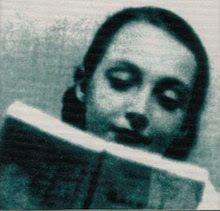 En conclusion de son Ethnologie de la porte (2012), Pascal Dibie écrit : « Chacun sait qu’il faut toujours y regarder à deux fois avant de franchir une porte tant il y a de portes qui échappent au contrôle et dont on doit se méfier, de portes pièges qui s’ouvrent et se referment d’elles-mêmes, de portes vives qui ouvrent sur le feu de la vie. La porte masque, la porte unit, la porte sépare […]. » En conclusion de son Ethnologie de la porte (2012), Pascal Dibie écrit : « Chacun sait qu’il faut toujours y regarder à deux fois avant de franchir une porte tant il y a de portes qui échappent au contrôle et dont on doit se méfier, de portes pièges qui s’ouvrent et se referment d’elles-mêmes, de portes vives qui ouvrent sur le feu de la vie. La porte masque, la porte unit, la porte sépare […]. »
Une photographie a constitué pour nombre écrivains et certains cinéastes, l’embrayeur d’une œuvre à venir. On pense bien sûr à Marguerite Duras pour L’Amant, à Georges Pérec pour W ou le . . . → En lire plus
Posté par Nicolas Ballet, le 6 juillet 2015;
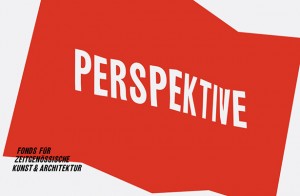
Perspektive is a German-French fund for contemporary art and architecture initiated by the Bureau des arts plastiques of the Institut français in Germany and the French Embassy in Berlin. Perspektive aims to promote and develop the artistic collaboration between France and Germany. Perspektive supports projects that promote direct and personal exchange between the emerging scene in the fields of contemporary art and architecture.
Perspektive encourages the internationalisation of the art scene by supporting public meetings such as seminars, workshops, conferences and symposiums in both countries.
Applications are welcomed from projects that emphasis interaction and exchange between emerging artists, architects and curators and contribute to the dissemination of ideas, . . . → En lire plus
Posté par Denis Dubois, le 5 juillet 2015;
- Date limite : 9 novembre 2015
- Date et lieu du colloque : 7-9 avril 2016, Edimbourg, Congrès de l'Association of Art Historians
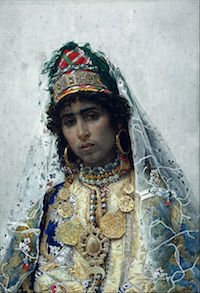 This panel is part of the annual conference of the Association of Art Historians (UK), which will be hosted by the University of Edinburgh, 7-9 April 2016. The panel invites papers that examine 19th- and 20th-century visual responses to Spain’s Islamic past and Spain’s nearest ‘Orient’, Morocco, by both Spanish and non-Spanish artits across all media (architecture, fine art, illustrated books, photography, film, fashion, etc.). This panel is part of the annual conference of the Association of Art Historians (UK), which will be hosted by the University of Edinburgh, 7-9 April 2016. The panel invites papers that examine 19th- and 20th-century visual responses to Spain’s Islamic past and Spain’s nearest ‘Orient’, Morocco, by both Spanish and non-Spanish artits across all media (architecture, fine art, illustrated books, photography, film, fashion, etc.).
Spain represents a unique and fertile context in which to explore attitudes to the art and culture of the Islamic world. Spain was routinely ‘orientalised’ by northern European cultures in the 19th century, as foreign visitors indulged in oriental reveries when reflecting on Spain’s Islamic past . . . → En lire plus
|
Équipe Rédacteur en chef : Olivier Bonfait.
Rédacteurs : Elliot Adam (Moyen Age) ; Nicolas Ballet (XX-XXIe siècles) ; Matthieu Fantoni (musées) ; Antonella Fenech Kroke (bourses) ; Vladimir Nestorov (Lettre mensuelle)
Administrateur web : Matthieu Lett.
ancien éditeur : Pascale Dubus
anciens rédacteurs : Gautier Anceau, Sébastien Bontemps, Damien Bril ; Sébastien Chauffour ; Ludovic Jouvet ; Aude Prigot
|
 This interdisciplinary conference aims to bring together scholars from the sciences, social sciences and humanities in order to address material practices of mimesis. Aristotle, in one of the first definitions of the concept, argues that mimesis, or the imitation of nature, refers to both form and material. Thus far, scholarship has mostly focused on the role of form in mimetic practices, while the mimetic role of materials, despite the many disciplines in which these are central to making and knowing, remains significantly understudied.
This interdisciplinary conference aims to bring together scholars from the sciences, social sciences and humanities in order to address material practices of mimesis. Aristotle, in one of the first definitions of the concept, argues that mimesis, or the imitation of nature, refers to both form and material. Thus far, scholarship has mostly focused on the role of form in mimetic practices, while the mimetic role of materials, despite the many disciplines in which these are central to making and knowing, remains significantly understudied.


















